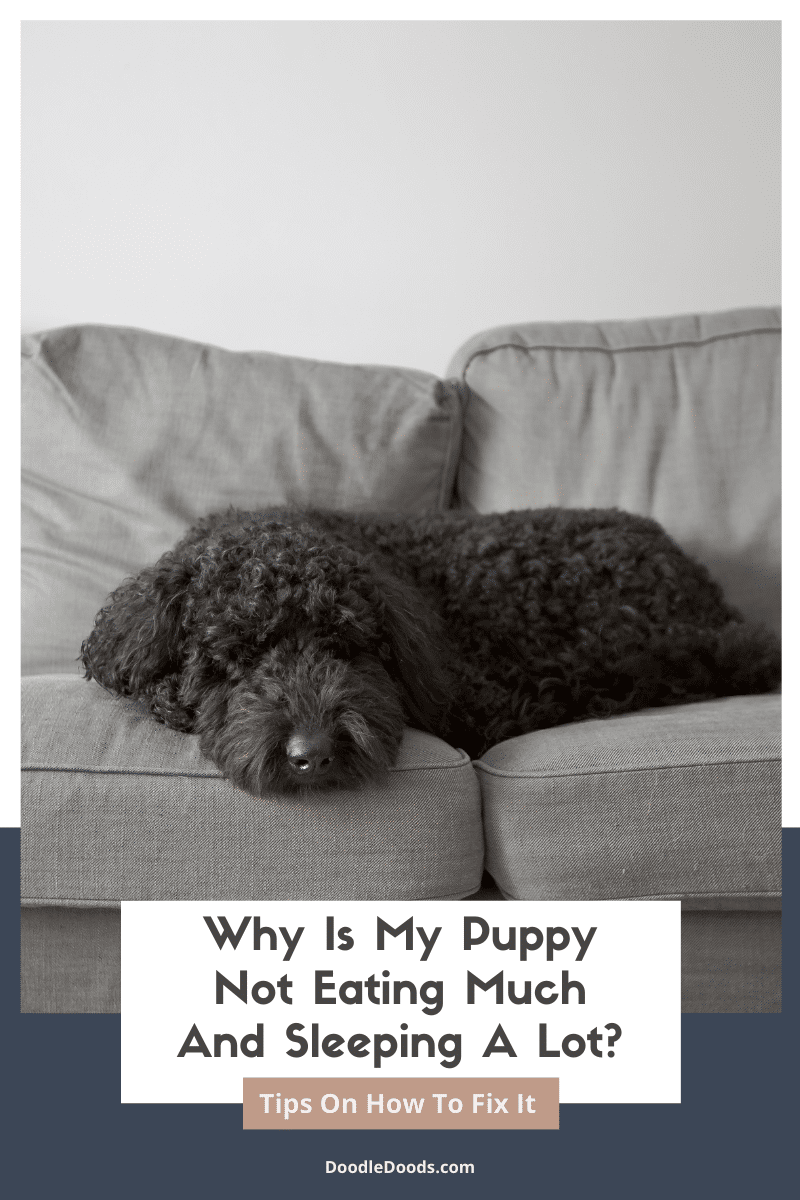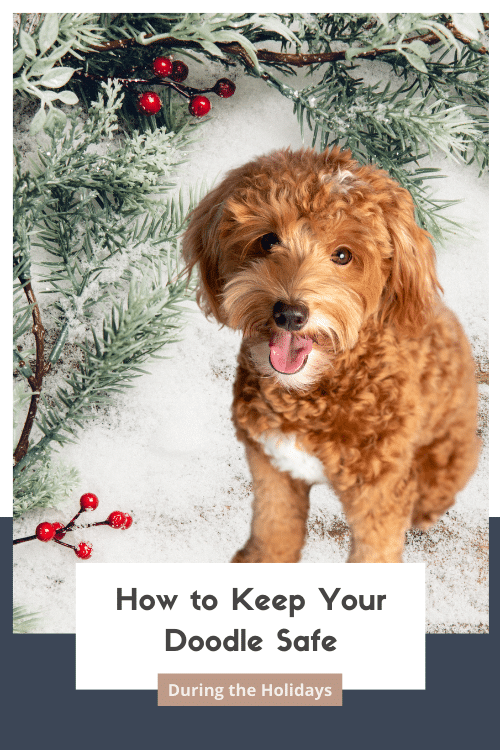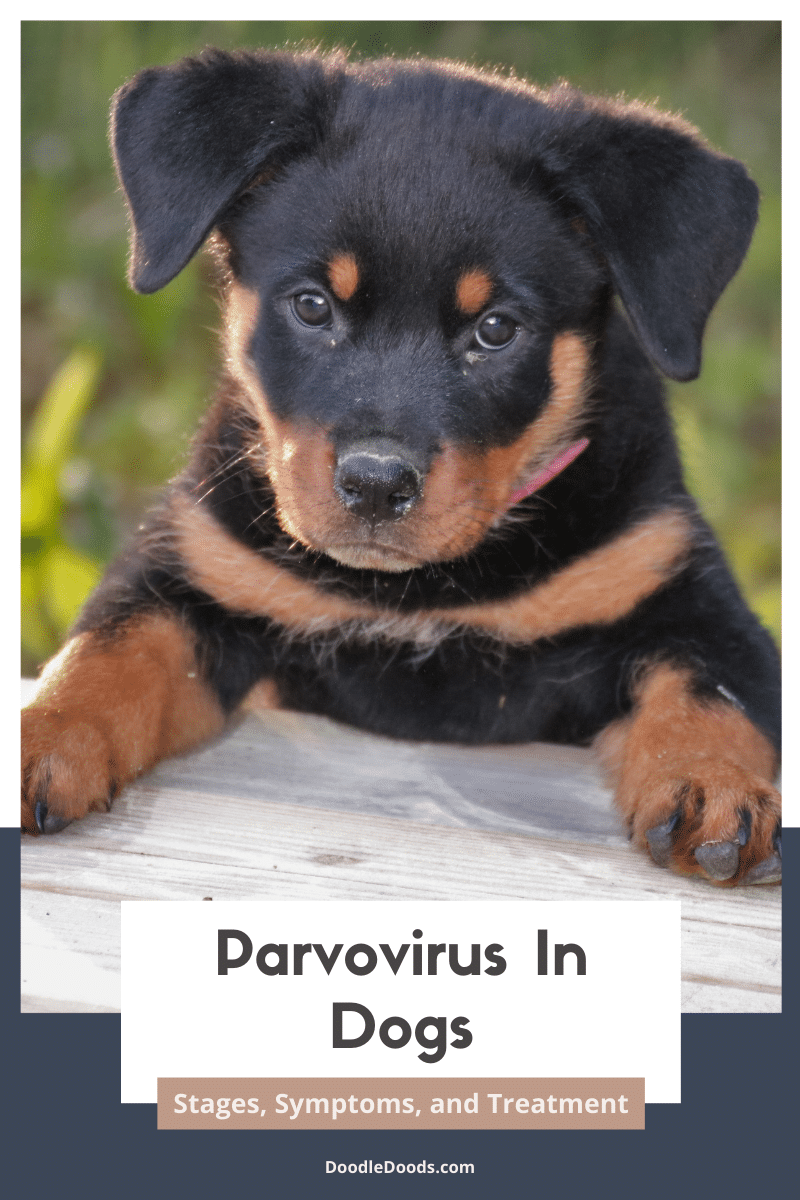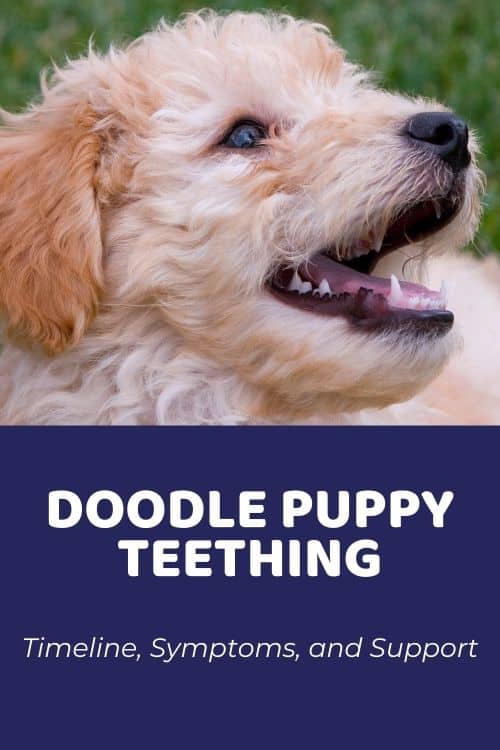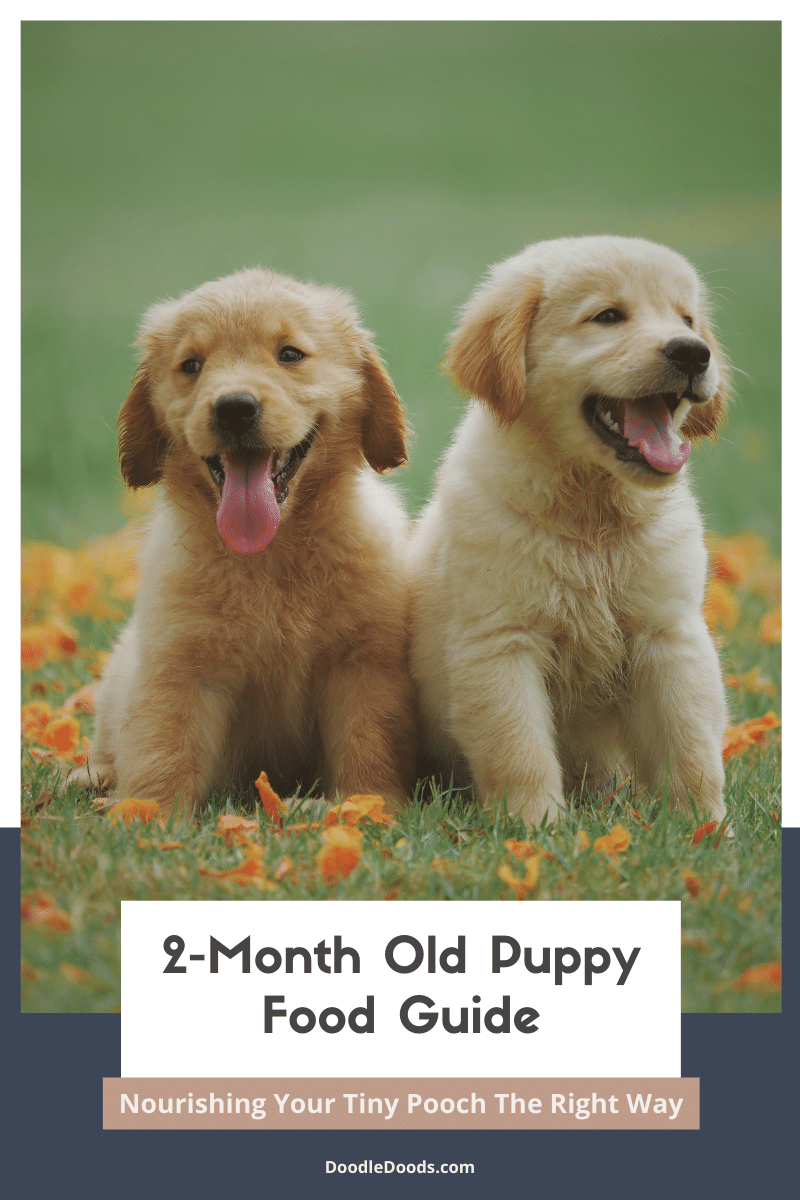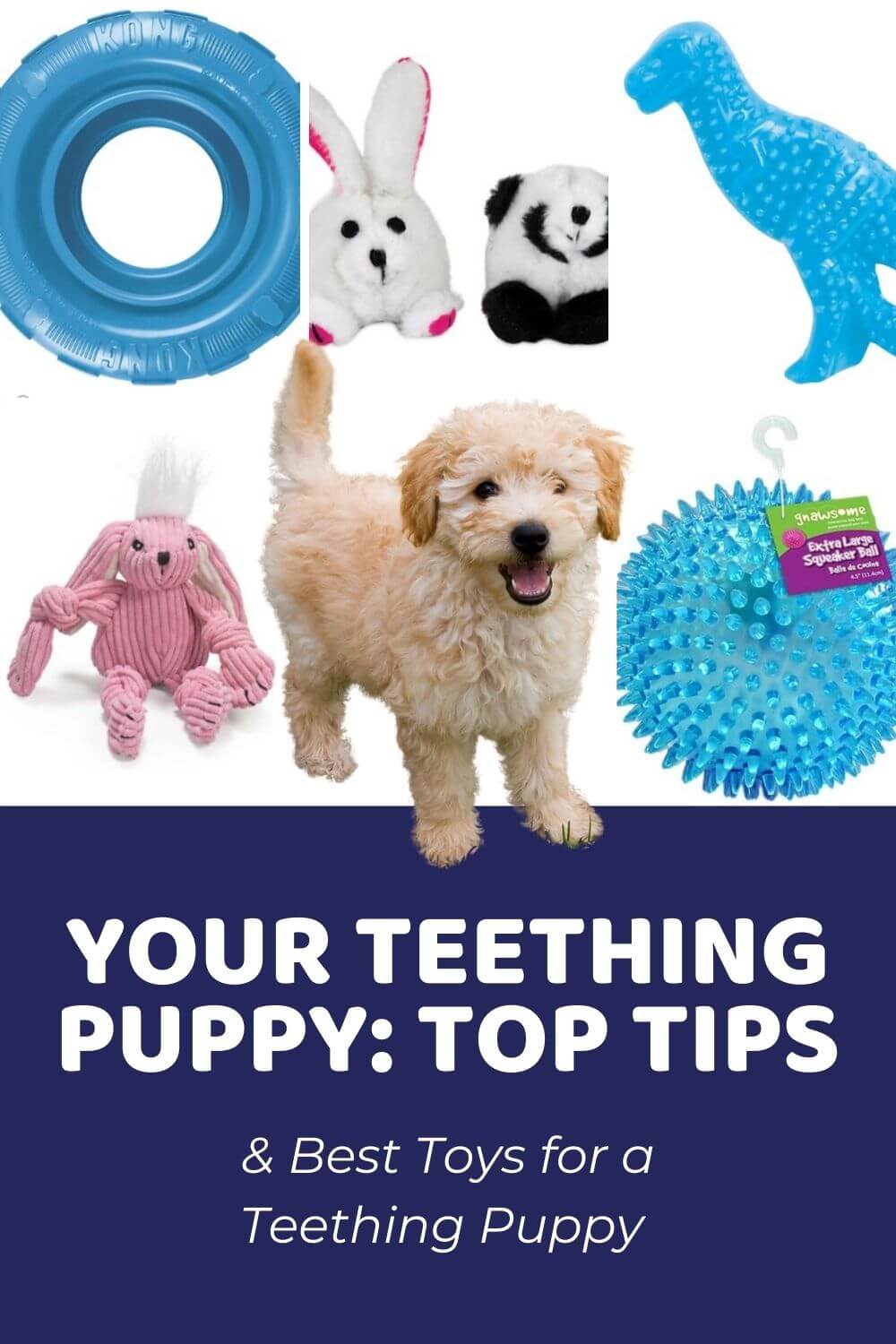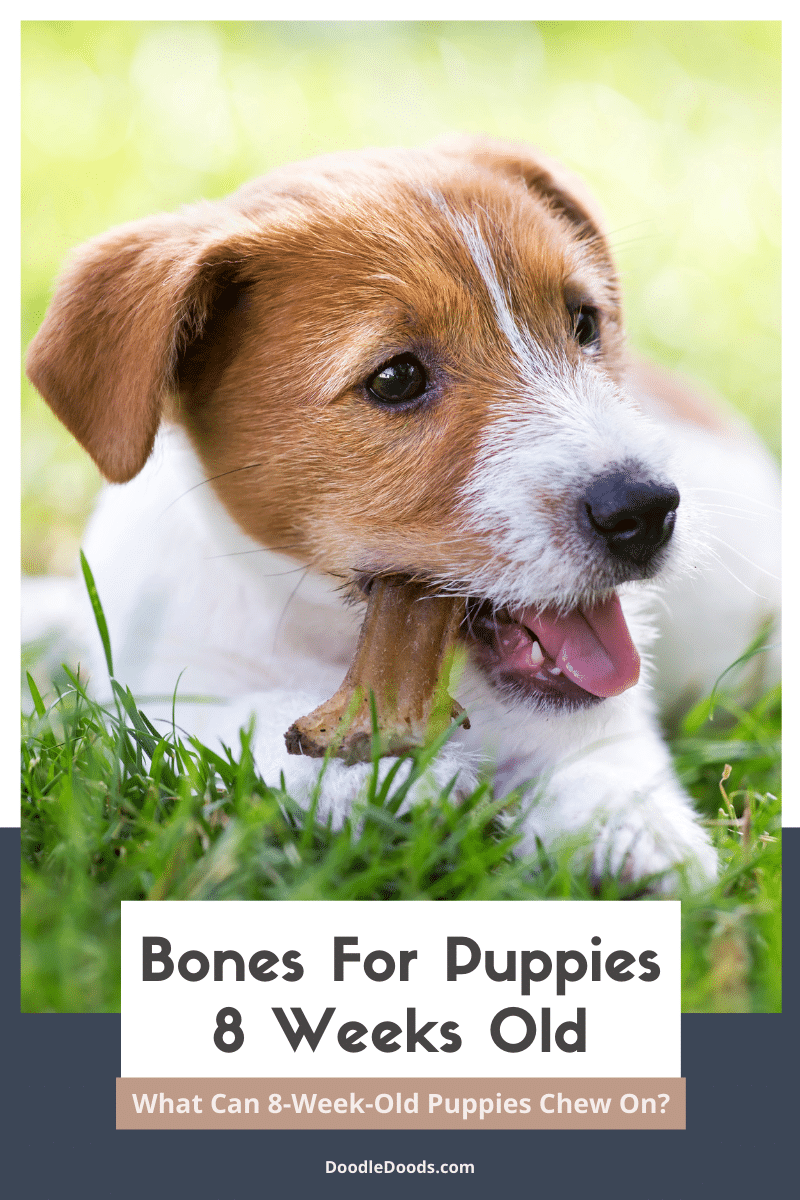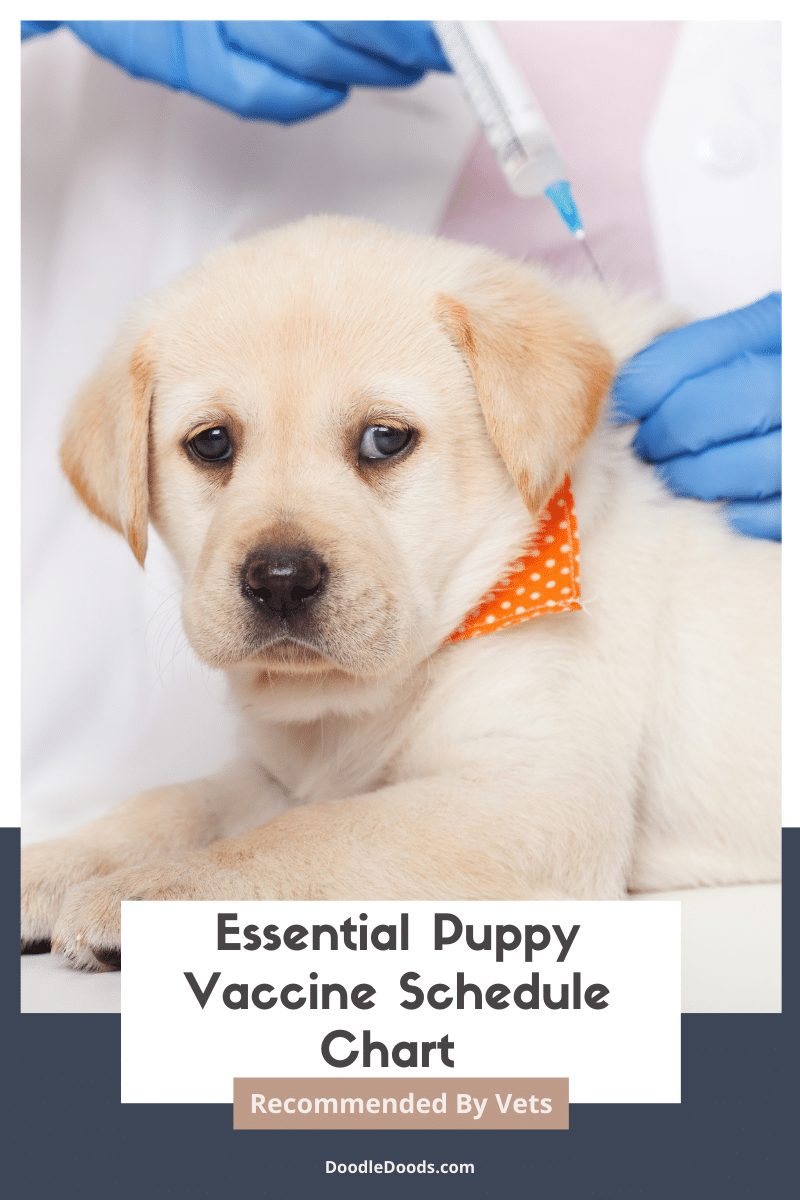Welcoming a new little pooch into your family is such an amazing time. But as puppies are technically still babies, you’ve also got to be prepared to take extra care of them and keep a close eye on their growth, development, and wellbeing during this delicate life stage. If you’ve noticed that your puppy is not eating much and is sleeping a lot, it might not be due to any particular reason besides them being… a puppy. However, if those changes are sudden and out of character, it could indicate that there’s an underlying health condition that you should immediately get diagnosed and treated. In this guide, we’re going to talk more about this topic so that you can be best prepared for whatever’s to come with your new best pal.
Table of Contents
- Puppy Not Eating Much And Sleeping A Lot: Introduction
- Why Is My Puppy Not Eating Much And Sleeping A Lot?
- Healthy Sleeping Patterns And Eating Habits In Dogs
- What Should I Do If My Dog Is Not Eating Much?
- When Should You See A Vet If Your Puppy Is Not Eating Much?
- Puppy Not Eating Much And Sleeping A Lot: FAQs
Puppy Not Eating Much And Sleeping A Lot: Introduction
To be fair, puppies sleep a lot. The younger the pup, the more rest they need to properly recharge and grow at a healthy, optimal state. Again, we can see a similar correlation here with human babies. Both young puppies and human babies need lots and lots of sleep. And after your pup has had its nap, you’ll likely notice how full of energy they become. It’s just how they are!
Like humans, puppies also experience differences in their energy levels and appetite. Some days your lil’ pup may feel super rambunctious. On other days you may notice them being lazy and sleepy for the whole 24 hours. What’s more, some dogs are simply picky eaters. As a result, they will have a difficulty getting enough energy from their food due to their pickiness.
But besides the usual slight fluctuations that everyone experiences, your puppy not eating much and sleeping a lot could actually be a sign that something a bit more worrisome is going on. That’s why it’s crucial that you keep a close eye on your young puppy from the moment you bring them home. Pay attention to how much your puppy usually eats and sleeps and it won’t be difficult for you to notice when there are sudden changes in your pup’s behavior, eating habits, and sleep patterns.
Going one step further, if you’re adopting your puppy from a breeder, they’ll likely let you know about the puppy’s usual daily routines like how much and when they sleep, and so forth. Based on that information, you can start learning your pup’s usual behaviors and therefore also have a better chance of noticing any signs that are out of the ordinary quickly.
Still, the question persists – why is my puppy not eating and sleeping a lot?
Why Is My Puppy Not Eating Much And Sleeping A Lot?
Infections, Infestations, Or Illnesses Might Be The Root Cause
The most common reasons for a puppy not eating much and sleeping a lot stem from various health conditions. For example, parasite infestations, infections, or illnesses. Delicate as they are, puppies are at a much higher risk of some health problems. They may also have a much harder time getting well when the illness strikes.
Both adult dogs and puppies are at risk of parasite infestations and those nasty worms can cause changes in your puppy’s appetite and energy levels. Parasites can also contribute to malabsorption of nutrients so that even if your puppy is eating food, they might not be getting all the healthful things from it as they usually would, making them feel tired and weak. If your pup has caught intestinal parasites, they may also exhibit symptoms like bloating, vomiting, and diarrhea. In some cases, they may even start to eat poop or other non-food items.
Infections and viral diseases like parvo, distemper, or any other type of infection (such as urinary tract infections) often also lead to a puppy not eating and sleeping a lot. The more serious health conditions can be easily prevented with vaccinations. Just be sure to stay on top of your puppy’s vaccine schedule, follow your vet’s exact guidelines, and there shouldn’t be a reason to worry. Likewise, regularly use dewormers as instructed by your vet to prevent parasite infestations.
In addition to that, puppies may sometimes experience digestive issues. These can lead to loss of appetite and lethargy, especially if you’ve changed their eating schedule or changed them to a new food formula. If you’re planning to switch your pup’s kibble or wet food formula, you should do it gradually over a 7 to 10 day period, slowly adding more of the new food to the old formula each day.
Vaccines Sometimes Cause Lethargy And Loss Of Appetite
Speaking of vaccines, although they’re definitely extremely helpful at preventing many severe illnesses, they can sometimes also cause adverse side effects for a few days after. That’s not to say that you shouldn’t have your puppy vaccinated as recommended. These side effects are actually quite common, but fortunately temporary and should subside in a few days.
However, if you’re worried about how your puppy is reacting to the vaccine, the safest bet would be to contact your vet. You probably have to provide your pup with more fluids, more appetizing foods like wet food or meal toppers, and make sure they get enough rest after the vaccinations.
Get Your Puppy Checked For Fading Puppy Syndrome
If your puppy is not eating much and sleeping a lot, and they’re less than 12 weeks old, they can be susceptible to fading puppy syndrome. Typically, this condition is more prevalent in very young puppies up until weaning, most commonly for the first two weeks from birth.
Puppies at risk of the fading syndrome often are weaker than their littermates from day one. They also have a difficulty growing, packing on weight, and won’t have as big of an appetite, either. However, in some cases, a puppy might do well initially but become weaker and weaker over time. There are many different reasons why a puppy might start to fade, such as birth trauma or not getting enough care and food from their mother.
It can be difficult to pinpoint the fading puppy syndrome, especially considering that the symptoms can be vague and not initially apparent. That’s why it’s crucial to keep a close eye on a puppy’s eating and sleeping habits as well as growth and development throughout those very first weeks since they were born to ensure that your puppy is getting enough nutrition, fluids, and grows at an optimal rate.
Check If Your Puppy Is Teething
All puppies go through the teething phase, which can be more uncomfortable than just the usual excessive chewing and gnawing to soothe the pain and discomfort. At around 3 to 4 months of age, a puppy will start losing its baby teeth to make room for a new permanent set of teeth. This is often accompanied by swollen and red, sometimes even bleeding gums, but also a decrease in their appetite and a low fever. On the other hand, your puppy may start to eat anything and everything in sight to soothe the discomfort.
Naturally, if your puppy is feeling the pain and discomfort of teething, they probably won’t be too keen on eating as much of their usual kibble as they were used to. Getting in less food and experiencing a low fever will then make your puppy feel a bit more lethargic and cause them to sleep more, too.
Although the teething process can take a few months, it’s only just a temporary phase that all dogs go through. To help your pup soothe their teething pain, make sure to provide them with plenty of puppy-safe chew toys to chew on. This will also enforce appropriate behaviors and habits, since you wouldn’t want your puppy to learn that it’s okay to chew on your hands and feet or perhaps your personal belongings… You can also utilize things like frozen treats and teething gel that have proven to be effective remedies.
Your Dog Ate Toxic Plants Or Other Poisonous Items
Dogs and puppies like to discover the world with all of their senses, including tasting, chewing, and eating almost anything they can get their paws on. Unfortunately, the list of poisonous house plants and garden plants for dogs is very long, so you’ve got to be extra careful about the plants you have in your home and yard, especially those that your pooch has access to. For a full list of safe and poisonous plants for dogs, check out this guide we prepared.
But it’s not just the plants that you should watch out for. Puppies can also get poisoned by household chemicals and cleaning products, things like rat poison, insecticides, or antifreeze, batteries and battery liquids, fabric softener sheets, fertilizers, mothballs, and many human and veterinary medications, to name a few.
Moreover, many human foods like chocolate, alcohol, caffeine, xylitol and other sweeteners, avocado, fruit pits and seeds, grapes and raisins, macadamia nuts and almonds, potatoes, rhubarb, tomatoes, onions, leeks, and chives can all be extremely dangerous for dogs when ingested.
Any and all items and foods that are harmful for dogs should be safely stored away out of your dog’s reach. Place all household chemicals in safely closed cabinets and drawers, and don’t feed your dog any table scraps in case they contain any harmful ingredients. Likewise, limit your dog’s access to toxic plants with pet gates or simply place them in rooms where your dog can’t go.
Your Puppy Is Still Getting Used To Its New Home And Family
If your new puppy won’t eat and sleeps a lot, it could also be due to the stress and anxiety that they experience when being taken to a whole new environment, away from everyone and everything they’ve known so far. As fellow dog owners, we know first-hand how exciting Gotcha Day can be with a new pet. But remember that puppies aren’t quite the same as us. In fact, it can take your puppy a few weeks to adjust to its new home and family. After all, they don’t understand why all of a sudden they’re away from their littermates and mama, and in a completely new environment.
The first few days and weeks with a new puppy can be quite tricky, but with the right tactics, you can make the transition as smooth and easy as possible for your pooch. To create a sense of safety and security for your new best pal, schedule mealtimes, bedtimes, and start potty training and crate training your new puppy as soon as you bring them home. If they know what to expect and when to expect it, their stress and anxiety will soon subside.
Healthy Sleeping Patterns And Eating Habits In Dogs
Now that we’ve discussed some possible reasons why your puppy is not eating much and sleeping a lot, let’s talk about the healthy sleeping and eating patterns that dogs generally follow.
Like with humans, puppies can sleep for the majority of the day. It’s very normal for a young puppy to sleep about 18 to 20 hours each day. However, they will take shorter naps that usually last for about an hour or two during the day, not sleeping for the full 18 hours at once. During nighttime, they will probably sleep for about 4 to 6 hours at a time. In contrast, adult dogs sleep on average about 12 to 14 hours in a 24 hour period. By the way, senior dogs will also need more sleep like puppies do. Additionally, adult dogs will spend some of their waking hours just chilling and lying down as well.
In terms of their eating habits, it’s quite similar. Younger puppies will need more mealtimes than adult dogs. Young puppies that haven’t been weaned from mother’s milk should have constant access to food. From 8 to 12 weeks of age, you should feed your puppy about 3 to 4 times a day, at around 4 to 5 months of age you can introduce 3 meals per day, and by the time your pup is 6 to 7 months old, you can graduate them to 2 meals a day.
It’s also important to feed your dog the right amount of food according to their age, size, weight, and overall health and lifestyle. For more information, check out our in-depth guide: How Much Should I Feed My Dog? Calculator And Puppy Feeding Guidelines.
What Should I Do If My Dog Is Not Eating Much?
First things first, you should try to figure out why your puppy is not eating much and sleeping a lot. Think about the previous few days – did you and your pup play and exercise a lot? Have they had more yummy snacks and treats than recommended? Did they just arrive home from a long trip or from the breeder’s home? All of this can make your puppy tired and a bit stressed out.
If your pup is otherwise behaving as normal and energetic whilst they’re awake, without showing any other symptoms like diarrhea or vomiting, you hopefully won’t have to worry too much. But, there are a few simple tricks you can do to increase your dog’s appetite. These include:
- Feeding your dog at the same time and in the same place every single day;
- Feeding the same type of food to your pup. If you have to switch their formula, only do it gradually over time;
- In case of picky eating, experiment with different flavors and formulas to find the one that your dog enjoys the most;
- Not feeding too many treats during training or in between mealtimes;
- Making their dry kibble more appetizing with clean, warm water or bone broth, or adding meal toppers, wet food, or boiled and shredded meat to their food;
- Warming up wet wood to release stronger smell and make it more appetizing;
- Exercising before mealtimes to stimulate appetite;
- Soothing teething pain with chew toys, frozen treats, and puppy teething gel;
- Feeding your pooch in a calm spot, away from distractions and the hustle and bustle of a busy household.
When Should You See A Vet If Your Puppy Is Not Eating Much?
“My dog is sleeping more than usual and not eating – should I be worried?” We always encourage pet parents to err on the side of caution. Just to be safe. While it’s not uncommon for a dog or puppy to experience some variations to their energy levels and appetite, changes that last for longer than 24 hours should most definitely be discussed with a veterinarian.
If your young puppy hasn’t eaten at all in 12 hours, we recommend you give your vet a call immediately or take your puppy to an emergency vet clinic. Puppies’ immune systems and bodies are still developing and they’re also at higher risk of complications if any illnesses are left untreated in a timely manner.
In addition to that, if you notice any other changes in their behavior or bathroom habits, such as vomiting or having diarrhea or constipation, and they’re also not drinking water, it’s your cue to get to the vet immediately. Other worrying signs that you should immediately take action upon include excessive vocalization or extreme tiredness, fever or low body temperature, coughing, pawing at their mouth, shaking and trembling, aggression, fear, depression, or loss of coordination. Basically anything that’s out of the ordinary or seems off to you. Again, as a pet parent, you should learn your dog’s usual behavior so that it’s easier to notice when something’s wrong.
Understandably, vet visits aren’t the cheapest thing so we do recommend every single pet parent to get a good pet insurance plan to help ease the financial strain. At the end of the day, caring for a pet isn’t cheap and it’s not a place to cut corners, anyway.
Puppy Not Eating Much And Sleeping A Lot: FAQs
Puppies can sleep around 18 to 20 hours in the 24 hour window, leaving them only about 4 to 6 hours of waking time to eat, exercise, train, and play. Indeed, during those waking hours your puppy will most likely be insanely active and energetic, but completely wiped out when they’re taking a nap. Also, puppies take naps throughout the day and at 4 months of age they won’t be sleeping for 18 to 20 hours straight. So, if you notice that your puppy is sleeping more than usual, let’s say more than 20 hours a day or they take much longer naps, and it’s paired with decreased appetite, we recommend you contact your vet and ask them for further guidance.
Sometimes dry kibble isn’t enough to stimulate your pup’s appetite, especially if they’re not feeling so well. To make the food more palatable, you can soak the kibble in warm water or bone broth so that the aromas get released better. You can also use food toppers or add in bits of wet puppy food or even boiled chicken to make it more appetizing for your puppy. If your puppy doesn’t like its kibble at all, you might want to consider switching them to a wet formula. Also, don’t underestimate the power of your puppy’s lifestyle, such as making sure that they get enough exercise and playtime throughout the day, they have plenty of breaks for resting and napping, and get lots of kisses and cuddles from you. Try to keep your puppy’s stress levels at an absolute minimum, especially when they first arrive at your home.
Symptoms of parvo in dogs include lethargy and depression, loss of appetite, vomiting and severe diarrhea (both of which can also contain blood), fever or hypothermia, severe weight loss, weakness, stomach pain, and rapid heartbeat. Parvovirus is an extremely dangerous condition and the mortality rate of untreated parvo in dogs is about 90%. As soon as you notice any of the first signs, contact your vet immediately so that your puppy has the best prognosis. Keep in mind that puppies and unvaccinated or incompletely vaccinated dogs have the highest risk of catching parvo and it’s most dangerous from 6 weeks to 6 months of age.
Puppy Not Eating Much And Sleeping A Lot: Final Thoughts
In case your puppy is not eating much and is sleeping a lot, it’s definitely worth keeping an eye out for any other symptoms that are unusual in your puppy’s behavior and bathroom habits. While it’s hopefully nothing to worry about, it’s best that you’re rather safe than sorry. So whenever you’re in doubt and have a “gut feeling”, don’t hesitate to contact your vet about the appropriate steps to take. Above all, it’s so important to learn your pup’s behaviors and cues early on so that it’s easier for you to notice any worrying signs and symptoms as soon as possible. By taking quick action, you can ensure the best possible care and prognosis for your little furbaby.
Want to Learn
DIY Doodle Grooming?
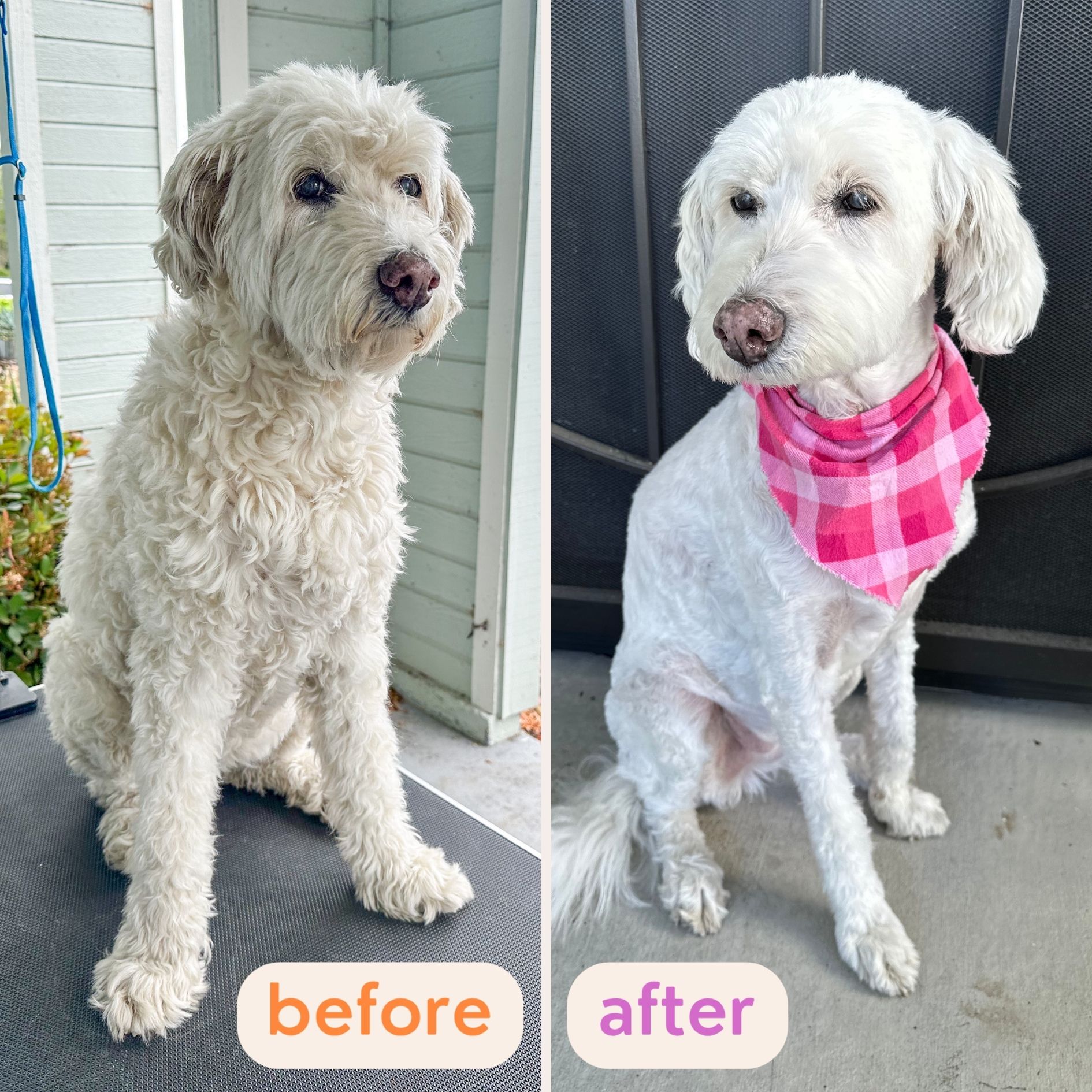
 “Every concern and question I had now has clear, practical solutions.” – Paula D.
“Every concern and question I had now has clear, practical solutions.” – Paula D.
 “These lessons have provided tremendous amounts of information.” – Steve B.
“These lessons have provided tremendous amounts of information.” – Steve B.
 “Buy the course and complain about how easy it is!” – Chris S.
“Buy the course and complain about how easy it is!” – Chris S.
Learn How To Groom Your Doodle At Home…
Safely…And Without Confusion:

